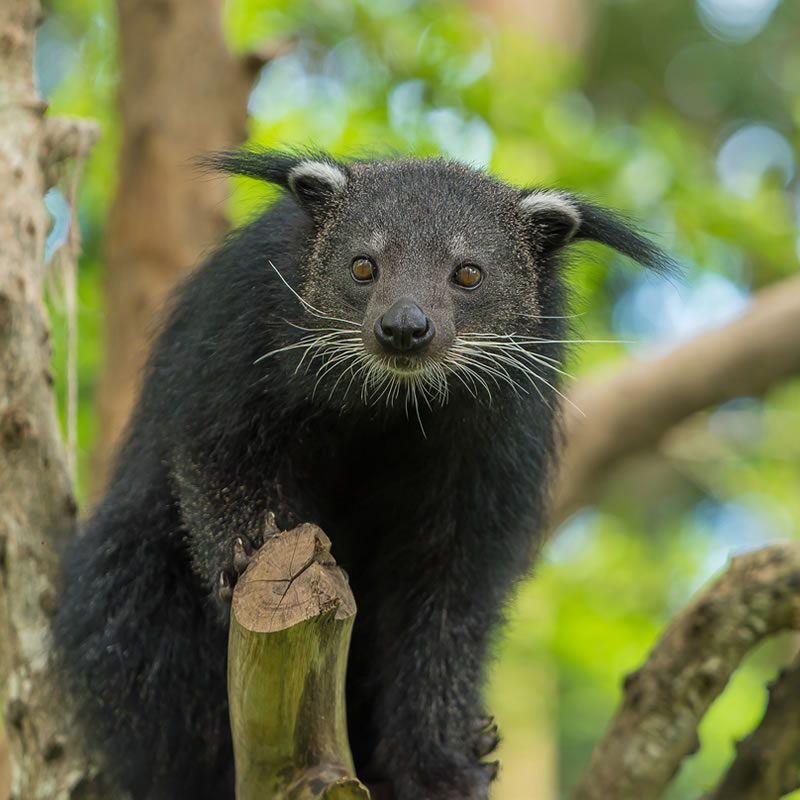
Scientific Name
Arctitis binterong
Classification
| Kingdom | Animalia |
| Phylum | Chordata |
| Class | Mammalia |
| Order | Carnivora |
| Family | Viverridae |
| Genus | Arctitis |
| Species | binterong |
IUCN Redlist Status

Location
They are located in countries such as Thailand and Vietnam and on the islands of Borneo, Sumatra and Java.
Habitat
Binterongs can be found in the rainforests and mangroves of southeast Asia. They spend most of their lives high in the trees there. They are mostly active at night.
Diet
Although binterongs are classified as carnivorous, they can eat sizeable amounts of fruit and plants. They also eat fish, small mammals or lizards.
Size
Binterongs grow to 2 or 3 feet in length, and their tails grow to about the same length.
Description
Binterongs' appearances are unique to the animal kingdom. They look like creatures right out of a fairy tale!
Their faces somewhat resemble the faces of bears, except that binturongs have many long, black hairs that extend from their ears and heads. They have short muzzles with long white whiskers. The long whiskers help them move around and find food at night. The fur on their faces is often a light, grey color.
Binturongs travel on all fours, and their legs are short like raccoons' legs. Their long tails are prehensile, which means that they can wrap around objects. Using their tails, they can hang from tree branches and obtain hard to reach fruit.
Adaptations
They are well adapted to surviving in the trees of the forest. They have sharp claws that can grip trees. Their tails help them maneuver in a number of ways. Their short legs likely help them keep balance and stay close to the tree branches.
Reproduction
The gestation periods of binterongs last approximately 3 months. At that time, females will usually give birth to two or more young.
Other Facts
Like many other animals that live in rainforests, they are endangered due to habitat destruction.
